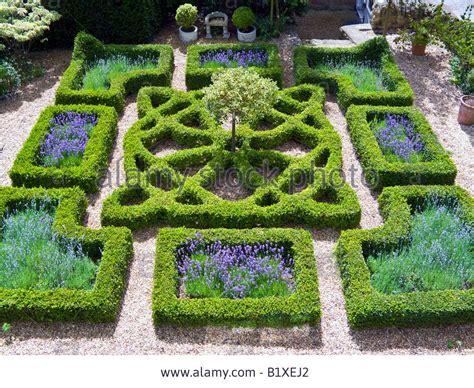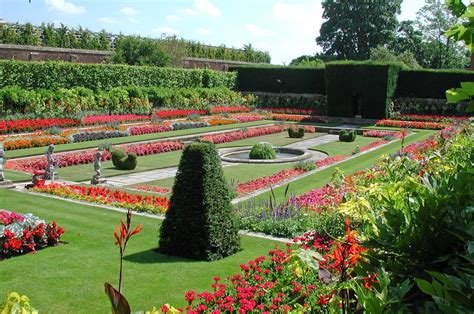tudor knot garden patterns | early tudor flowers tudor knot garden patterns A knot garden consists of a variety of aromatic and culinary herbs, or low hedges such as box, planted in lines to create an intertwining pattern that is set within a square frame and laid on a . This is an authentic LOUIS VUITTON Monogram Game On Coeur. This chic heart shaped handbag is crafted of Louis Vuitton coated canvas. The bag features a gold top zipper with two leather zipper pull. The handbag opens to a light brown suede interior with a flat pocket.
0 · tudor knot garden ideas
1 · tudor gardens
2 · early tudor plants
3 · early tudor gardens history
4 · early tudor garden patterns
5 · early tudor garden map
6 · early tudor flowers
7 · 16th century knot garden
At the 19 December 2023 meeting of the Council of the Public Utilities Commission, changes to the tariffs of Gaso for the tariff period from 1 January 2024 to 31 December 2024 were approved. The new tariffs for the distribution system service will be visible in the bills in February 2024 for natural gas consumed in January.

I decided that the knot itself would be formed of herbs, rather than box that is commonly seen in recreations. I opted to use rosemary (Rosmarinus officinalis), common thyme (Thymus vulgaris) and savory (Satureja douglasi) . Knot gardens were a particular feature of the Tudor, Elizabethan and early Stuart periods. Most 16th and 17th century garden books contained advice on plants and designs for .Using household items, have a go at designing and growing your very own Tudor Knot Garden! Visit www.ordsallhall.com/families for templates and more fun ideas!A knot garden consists of a variety of aromatic and culinary herbs, or low hedges such as box, planted in lines to create an intertwining pattern that is set within a square frame and laid on a .
Original designs for knot gardens were usually inspired by patterns on objects found in the home, such as carpets, cushions, carvings and embroidery. The interlocking ribbons of two shrubs .

Enclosed by the original Tudor brick wall, its centrepiece is a brick fountain with four spouts symbolising the four rivers of paradise as mentioned in Genesis. A raised platform provides a .What is a knot garden? Knot gardens go back to Tudor times, when they were extremely popular. They are traditionally square beds planted with low, evergreen woody herbs such as .
Symmetrical knot gardens were enclosed by low hedges of clipped evergreens and filled with a variety of patterns or designs. Woody, scented herbs such as lavender, hyssop, marjoram and thyme were often used for edging. . Examples of Tudor Gardens can be seen at: Hampton Court. Hardwick Hall. Kenilworth. Lacock Abbey. Montacute House. Here is an article about the design of herb gardens over the years. Tudor Knot Gardens. In an age when gardeners had access to fewer ornamental plants, garden designs were almost modern in their minimalism and simplicity. The streamlined symmetry creates a very formal effect. The Tudor Knot garden shown here has an elaborate pattern but very .The best way to view the knot garden is from the raised wooden platform, which has been built to the same height as the original Tudor terrace. . A closed knot consisted of an interwoven pattern made by planting contrasting threads of plants. An open knot would have consisted of a simpler design without interwoven lines but simply divided .Using household items, have a go at designing and growing your very own Tudor Knot Garden! Visit www.ordsallhall.com/families for templates and more fun ideas!
tudor knot garden ideas
Geometric patterns and an intricately designed ‘knot’ garden. Mythical beasts such as dragons and bears. Striking colours and bunting reflecting the houses of York and Lancaster. Background of the Tudor Garden. This captivating Tudor Garden reflects the fascination of 16th century English aristocracy with geometric patterns and symbolism. Similar to parterre gardens, knot gardens bring distinct patterns to life and can mimic designs found in textiles, tapestry, and even woodworking. Curating a knot garden is as easy as deciding on a sunny spot, selecting a handful of perennials, annuals, or small shrubs, and planting them in a stylized display of shapes and patterns.And so to medieval English knot gardens with their criss-cross patterning of plants, as if formed by continuous threads. . planted out in a succession of continuous and interrupted lines to forming an embroidery-like pattern through a kind of illusion. . David Jacques, “The Compartiment System in Tudor England,” Garden History, Vol. 27 .
The key to doing this was to establish a combination of circular forms and linear patterns in the multiple garden elements we designed. French and Italian gardens place a heavy emphasis on order and symmetry, and both tend to utilize right angles to establish form. . In the center of the knot garden we planted Loropatalum, punctuated with a .It was also commonly used in potpourri and as a flavouring herb in cooking. Gardeners in the Tudor era often grew lavender in knot gardens or as a border in parterre gardens. 2. Tudor rose : The Tudor rose, with its distinct red and white petals, was a symbol of the Tudor dynasty. The intricate Tudor knot garden at Sudeley Castle was based on a dress pattern worn by Queen Elizabeth I in a portrait that hangs in the castle.[/caption] Today, ponds in the river gardens mirror the original carp ponds, and afternoon tea beside the stew pond watching koi drift in the water induces calm reverie.Knot garden was inspired by a patchwork quilt I made about 20 years ago (during the 1990’s); it was originally inspired by Tudor Knot gardens. A Knot garden is laid out in a geometric pattern, each flower bed is normally bordered with a box hedge. It was inspired by a visit to a Quilt show at Hatfield House in Hertfordshire, UK, while at the .
Knot gardens are so named because the pattern of their planting looks like a knotted rope. The design is usually in a square frame and made up of a wide variety of delicious smelling plants and herbs. . Our knot garden is situated very near where Tudor King, Henry VIII, met his fourth wife, Anne of Cleves for the first time. Graham Huckstepp .
Apr 2, 2016 - Explore Ann Balmforth's board "Tudor/Jacobean Knot Gardens" on Pinterest. See more ideas about formal gardens, garden design, parterre.
A knot garden is artfully laid out and planned in order to resemble the threads of ancient Celtic knot work. Knot gardens have been a part of traditional garden design for hundreds of years, yet they are rarely seen these days. Here’s more about designing a . It was during the early Tudor period, that ?ground patterns? created by low hedges were used to create ?knot gardens?, ?foot mazes? and labyrinths. Symmetry and geometry were highly favoured, as well as the use of topiary and evergreen plants.
red gucci trainers
I decided that the knot itself would be formed of herbs, rather than box that is commonly seen in recreations. I opted to use rosemary (Rosmarinus officinalis), common thyme (Thymus vulgaris) and savory (Satureja douglasi) for the knot pattern, with narrow leaved mock privet (Phillyrea angustifolia) forming a large central dome. Knot gardens were a particular feature of the Tudor, Elizabethan and early Stuart periods. Most 16th and 17th century garden books contained advice on plants and designs for knots. A knot garden was a formal, symmetrical, geometric, entwining design within a square bed. Learn about knot gardens and their place in garden design. The Old Farmer's Almanac describes how to plan, lay out, and plant your own knot garden.
puppy gucci
Using household items, have a go at designing and growing your very own Tudor Knot Garden! Visit www.ordsallhall.com/families for templates and more fun ideas!A knot garden consists of a variety of aromatic and culinary herbs, or low hedges such as box, planted in lines to create an intertwining pattern that is set within a square frame and laid on a level substrate. The spaces between these lines are often filled with stone, gravel, sand or flowering plants.Original designs for knot gardens were usually inspired by patterns on objects found in the home, such as carpets, cushions, carvings and embroidery. The interlocking ribbons of two shrubs imitate lines of stitching, creating a link between the garden and the interior.
Enclosed by the original Tudor brick wall, its centrepiece is a brick fountain with four spouts symbolising the four rivers of paradise as mentioned in Genesis. A raised platform provides a vantage point from which to survey the patterns of the Tudor knot garden.What is a knot garden? Knot gardens go back to Tudor times, when they were extremely popular. They are traditionally square beds planted with low, evergreen woody herbs such as rosemary, germander, hyssop, or santolina.
tudor gardens
early tudor plants
Gardevoir LV.61 #8/127 Holo Rare - Platinum Base Set - Lightly Played - VTG 2009 $3.99. Sold - 9 months ago. Comparable
tudor knot garden patterns|early tudor flowers


























